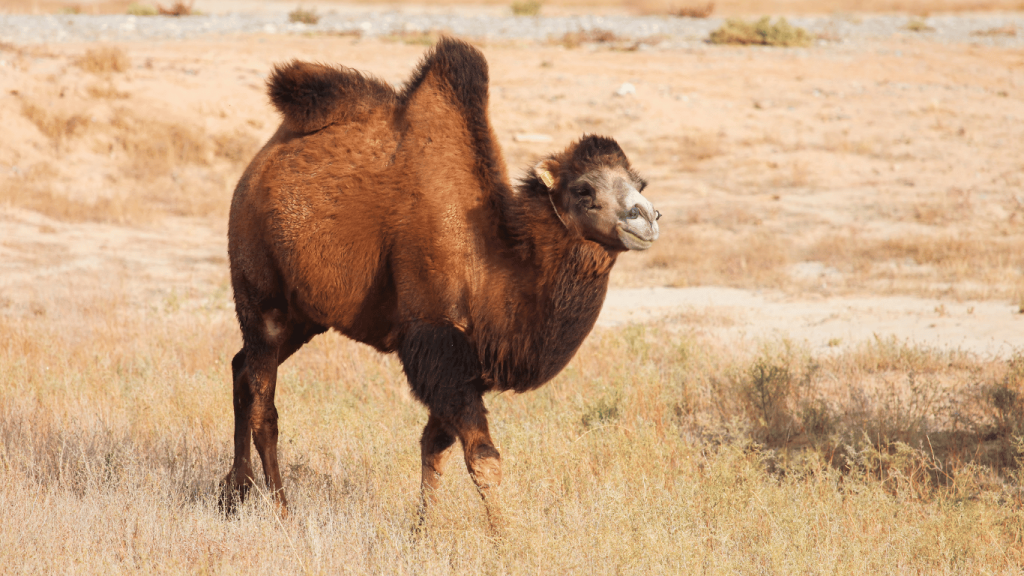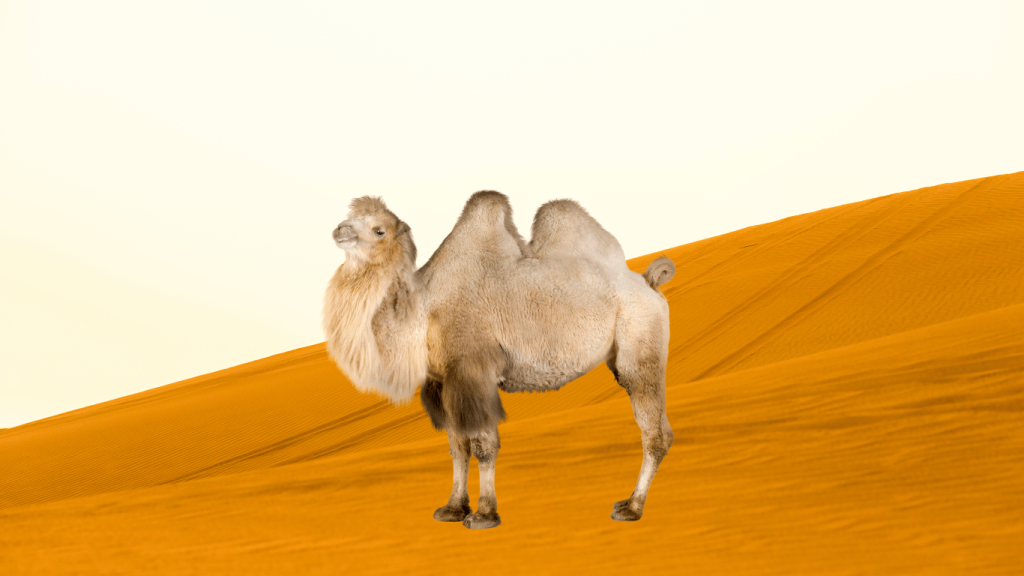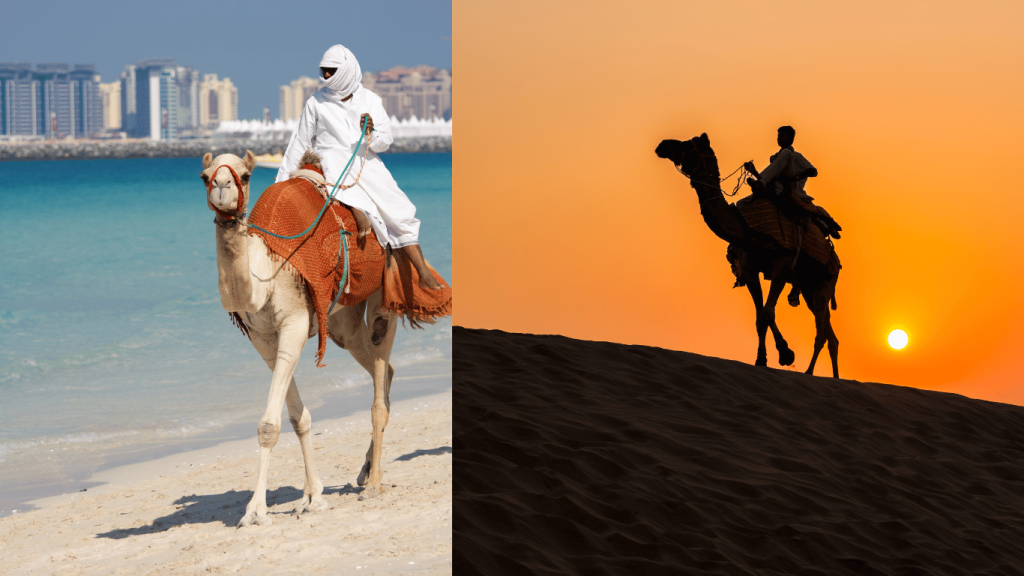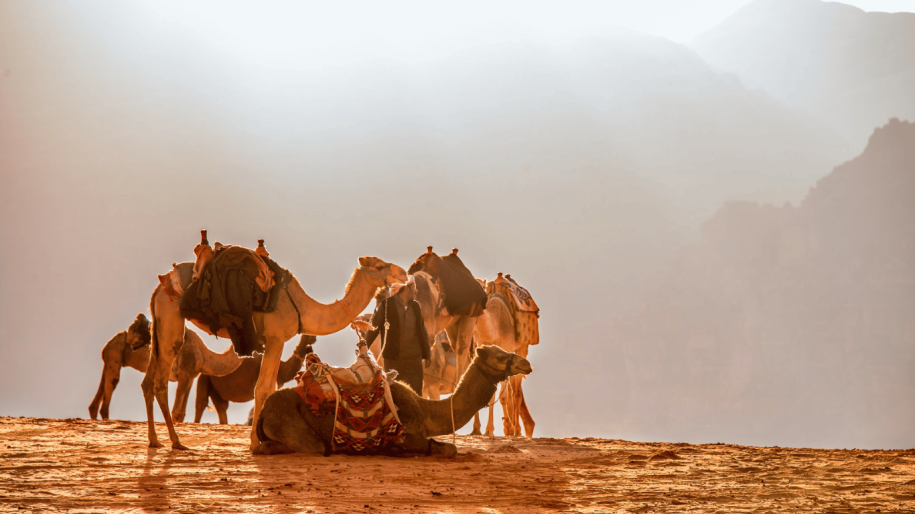Table of Contents
Introduction
Morocco, a captivating country known for its rich history, diverse culture, and breathtaking landscapes, is a top destination for travellers seeking adventure and memorable experiences. One of the most iconic and sought-after activities in Morocco is embarking on a desert tour, where you’ll have the chance to ride either a camel or a dromedary. In this comprehensive guide, we’ll explore the key differences between camels and dromedaries, the unique features of each, and what to expect during your Moroccan desert adventure. Our primary focus will be on understanding the differences between these magnificent creatures to help you make an informed decision for your Morocco tour. So, let’s dive in!
1. Before Differences Between Camels and Dromedaries Understanding The Camel Family

Before we delve into the differences between camels and dromedaries, it’s crucial to understand the broader camel family, known scientifically as Camelidae. This family comprises two distinct groups:
Bactrian camels

These camels are native to Central Asia and are known for their two humps. They’re adapted to cold and mountainous environments.
Dromedaries (Arabian camels)

With just one hump, dromedaries are native to the Middle East and North Africa, including Morocco. They thrive in hot, arid environments.
2. Hump Differences: One Hump or Two?

The most noticeable difference between camels and dromedaries is the number of humps on their backs. While Bactrian camels have two humps, dromedaries have just one. The humps serve as fat storage, providing energy and hydration for long journeys across the desert. When a camel or dromedary depletes its fat reserves, the hump will shrink and become floppy.
3. Physical Appearance: Size, Color, and More
Apart from the hump, there are other notable differences in the physical appearance of camels and dromedaries:
Size: Dromedaries are generally larger than Bactrian camels. Adult male dromedaries can weigh up to 1,600 pounds, while male Bactrian camels usually weigh between 1,000 and 1,500 pounds.
Color: Dromedaries typically have lighter-colored fur, ranging from cream to light brown. Bactrian camels, on the other hand, can have darker fur, varying from dark brown to black.
Coat: Bactrian camels have a thicker, shaggier coat to insulate them in colder climates. Dromedaries have a thinner, shorter coat that helps them stay cool in hot environments.
4. Adaptations for Desert Survival
Both camels and dromedaries have evolved specific features to survive in their respective environments:
Water conservation: Dromedaries can go for up to a week without water, while Bactrian camels can survive for up to two weeks. Both species can drink large amounts of water quickly, allowing them to replenish their reserves when they find a water source.
Temperature regulation: Camels and dromedaries have a unique ability to regulate their body temperature, preventing overheating in the scorching desert sun.
Protective features: To shield themselves from sand and dust, both species have long eyelashes, small ears, and the ability to close their nostrils.
5. Camel vs. Dromedary: Riding Experience

When it comes to riding, dromedaries are generally more comfortable than Bactrian camels due to their single hump and broader back. Riding a dromedary is typically smoother and more stable compared to a Bactrian camel. Additionally, dromedaries are more common in Morocco, making them the primary choice for desert tours.
6. Speed and Endurance
Both camels and dromedaries are known for their endurance, but dromedaries tend to be faster. A dromedary can reach speeds of up to 40 miles per hour in short bursts, while a Bactrian camel can reach a maximum speed of around 20 miles per hour. However, for long-distance journeys, both species maintain a more moderate pace of about 3 miles per hour, ensuring they can conserve energy and traverse the desert efficiently.
7. Camel and Dromedary Populations in Morocco
In Morocco, dromedaries are the predominant species, with over 200,000 dromedaries living in the country. Bactrian camels are not native to Morocco and are rarely found in the region. Dromedaries are well-suited to the Moroccan climate and landscape, making them the perfect choice for desert tours.
8. Cultural Significance of Camels and Dromedaries in Morocco
Camels and dromedaries have played an essential role in Moroccan culture for centuries. They have been used for transportation, trade, and agriculture and are often considered a symbol of wealth and status. Today, dromedaries continue to be an integral part of Moroccan life, especially in rural areas and among nomadic communities.
9. Preparing for Your Moroccan Desert Adventure
When planning your Morocco tour, it’s important to choose a reputable tour operator that prioritizes the well-being of the animals. A responsible operator will ensure their camels and dromedaries are well-cared for and not overworked. Additionally, make sure to pack appropriate clothing and gear for your desert adventure, including sun protection, comfortable shoes, and a camera to capture your unforgettable journey.
10. Tips for Riding a Camel or Dromedary

Whether you’re riding a camel or a dromedary, there are a few essential tips to keep in mind:
Mounting: When mounting, hold onto the saddle and lean back as the animal stands up. This will help you maintain balance and prevent any potential falls.
Posture: Sit up straight and hold onto the saddle or the provided handhold. Avoid slouching, as this can cause discomfort during the ride.
Leg positioning: Keep your legs relaxed and bent around the animal’s sides. Try not to grip too tightly, as this can cause discomfort for both you and the camel or dromedary.
Riding pace: Allow the animal to set the pace, and avoid urging it to go faster. Camels and dromedaries know the best place for navigating the desert terrain.
Conclusion
While camels and dromedaries share many similarities, they have distinct differences that set them apart. From the number of humps to their physical appearance and adaptations, understanding these differences will enhance your Moroccan desert tour experience. As you embark on your adventure, remember to choose a responsible tour operator, prepare adequately, and follow the tips for riding these majestic creatures. Ultimately, riding a camel or dromedary in Morocco is a once-in-a-lifetime experience that you’ll cherish for years to come.

